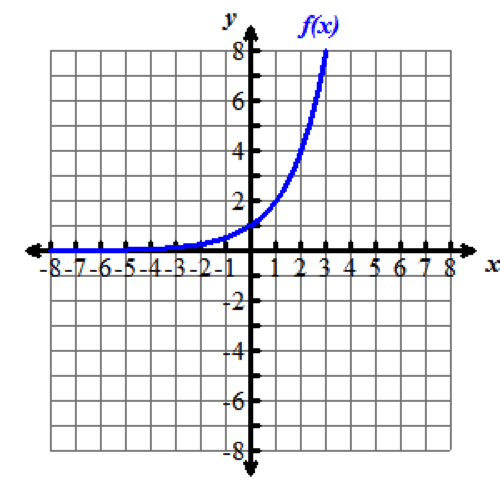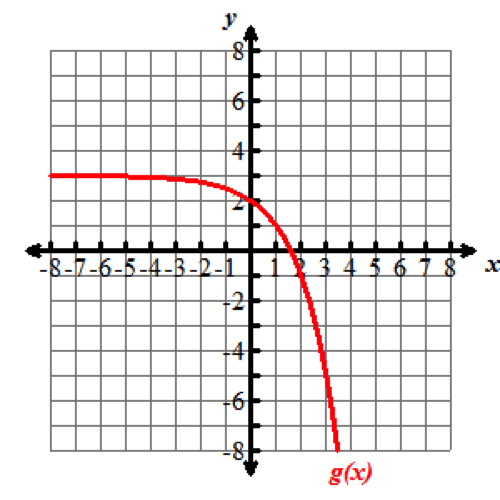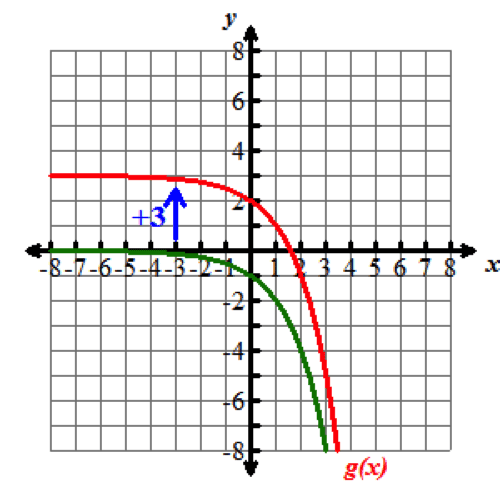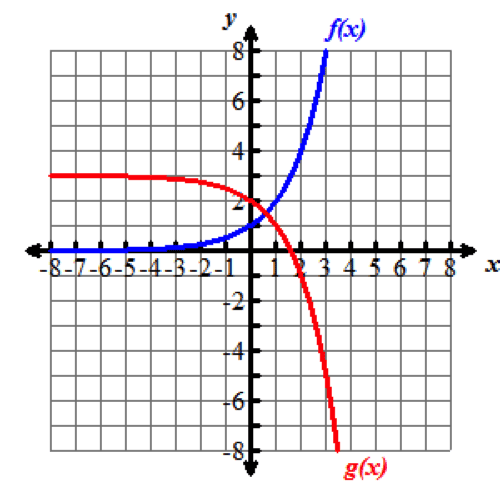Learn It Part 2
We must remember quite a lot of rules when determining how a function is transformed.
Consider the parent exponential function f of x.

This function f of x is transformed to form the function g of x.

How was the function f of x transformed?
The first characteristic is to notice the function f of x has been flipped upside down. This means that the function has been multiplied by a negative one (negative1).
g sub one of x equals negative one times f of x

Note also how the function f of x is translated three units up. This means the function has the value of three added to it.
g(x)=negative1f(x)+3g of x equals negative one times f of x plus three

Therefore, the translation of the function f of x to form the function g of x is noted as g of x equals negative one times f of x plus three.

Calculator Tip

When you are unsure of how the value of k will transform a function, graph various functions in your graphing calculator to test out the effects of k.
Visit the following website for instruction on graphing functions in the graphing calculator:
Mathbits: Graphing Functions in the Graphing Calculator Opens a new window


